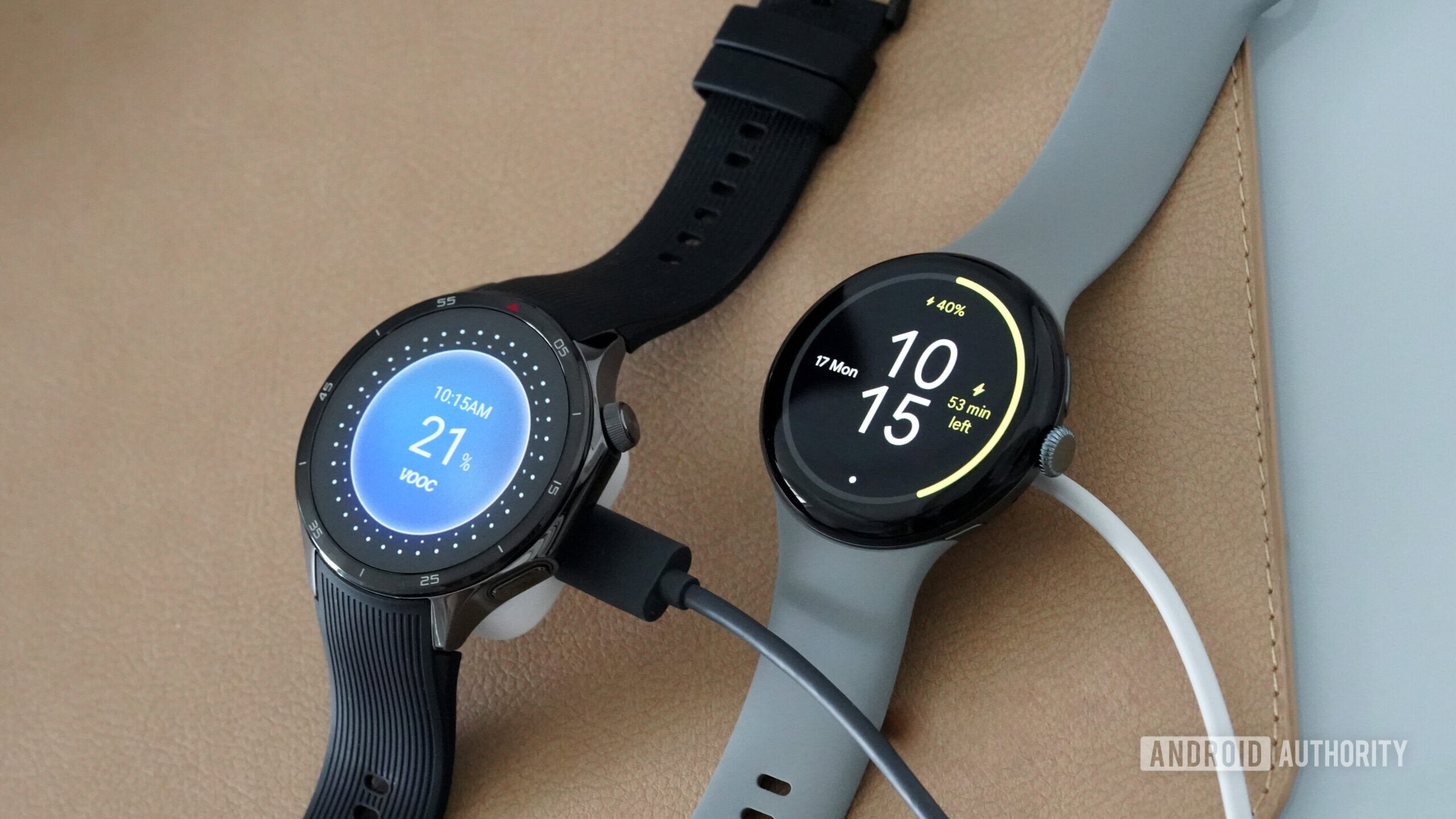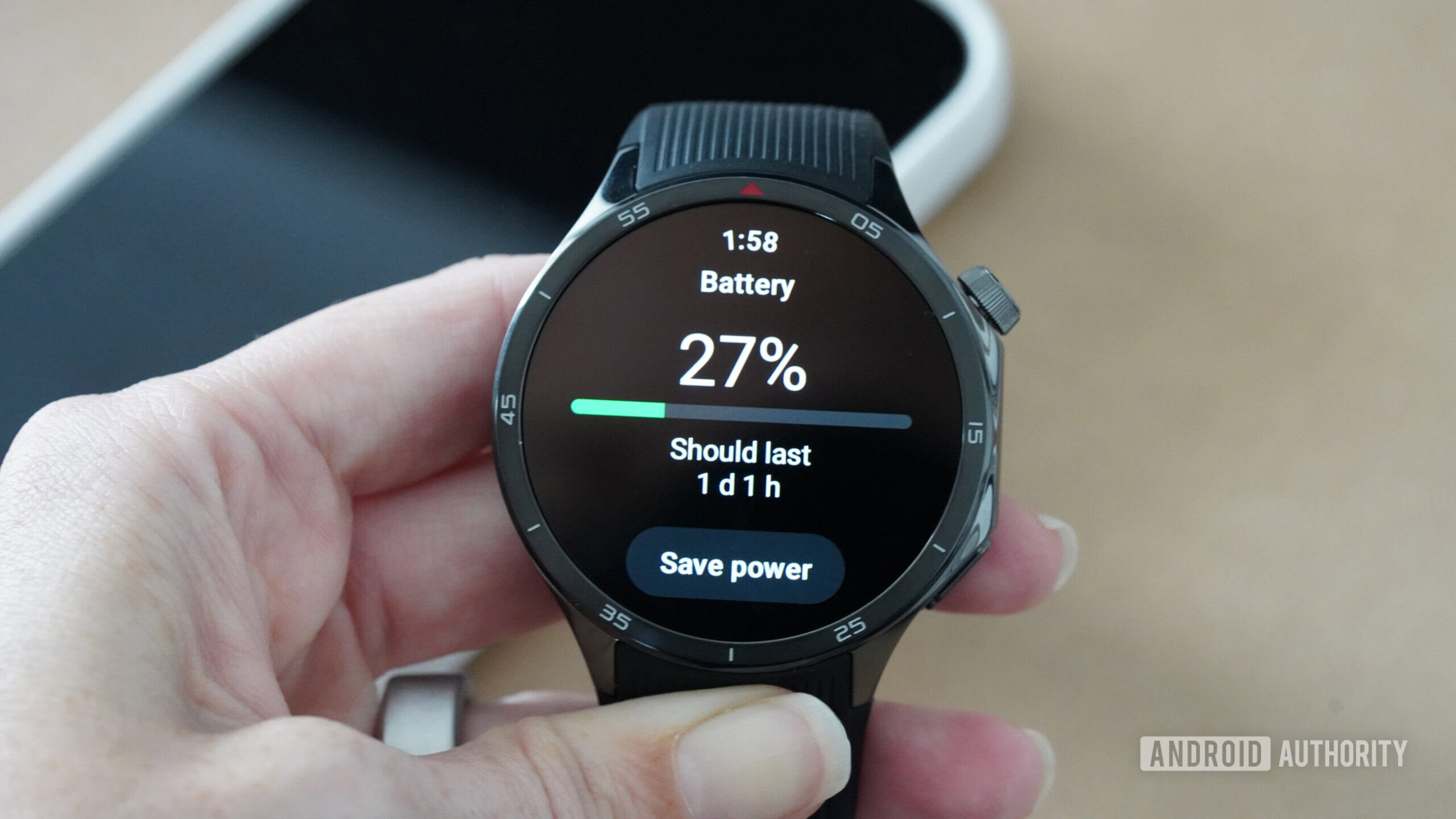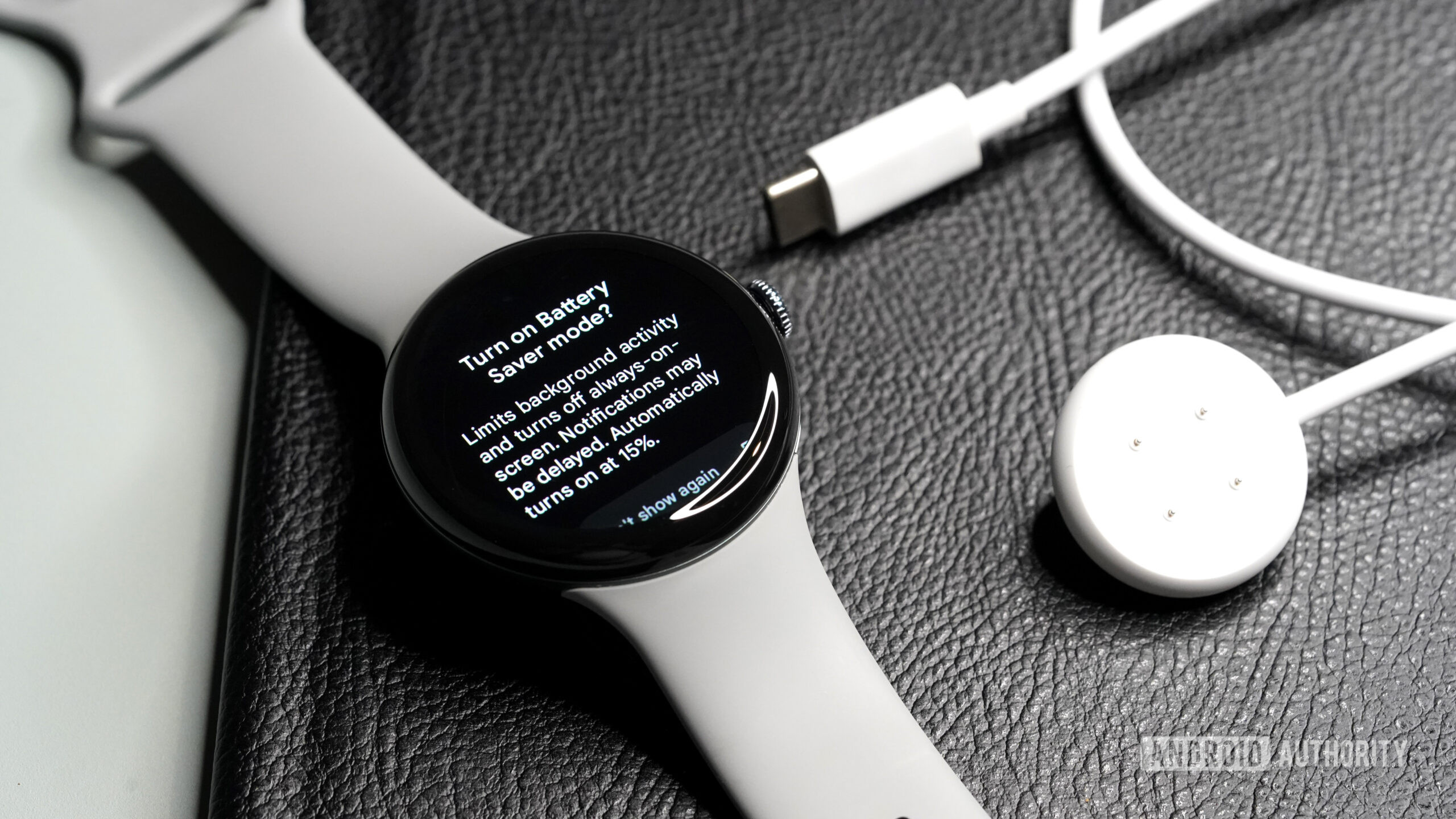
Kaitlyn Cimino / Android Authority
There’s very little more that I desire from the modern smartwatch. Sure, I wouldn’t say no to additional sensors to track even more health factors. I could also take slicker software and smoother animations. I’d even smile at brighter, higher-resolution screens. But beyond all those incremental improvements, I still yearn for a sizeable leap in battery life. Thankfully, that doesn’t seem too far off.
We’ve already seen one of the most significant smartwatch launches of 2025: the OnePlus Watch 3. Beyond its bulky design and hit-and-miss heart rate accuracy, it’s hiding a technology I’m truly excited to see on smartwatches: silicon carbon batteries.
Are you excited for silicon-carbon batteries on smartwatches?
5 votes
The (energy) potential for something great

Kaitlyn Cimino / Android Authority
This technology excites me so much. My colleague Robert Triggs offers a far more technical explanation of silicon-carbon batteries, but all you really need to know is that their chemistry offers much higher power density than traditional lithium-ion batteries of the same physical size.
That sounds good on paper, but how does this translate into real-world numbers? Let’s take the OnePlus Watch 3 as an example. Although it has a much bigger shell than its predecessor, it also has a 631mAh battery or a 26% increase in capacity over the OnePlus Watch 2. The company claims a five-day endurance figure, a statement we can vouch for after reviewing it. We’ve also seen silicon-carbon used widely across several Chinese flagship smartphones from vivo, OPPO, and OnePlus, yielding incredible duration figures in our tests. More than ever before, the 6,000mAh capacity figure is slowly becoming the new watermark for Android smartphones.
Thanks to its denser energy capacity, silicon-carbon batteries could give us thinner, slimmer smartwatches.
That’s all good and well, but it’s the smaller, wrist-worn devices that stand to gain massively. With that additional energy density, smartwatch manufacturers can afford to reduce the size of their smartwatches without worrying about reducing their battery capacity. Any reduction in bulk for a wearable product is a positive, especially as premium smartwatches adopt more metals in their case construction.
A Wear OS watch with a week-long battery? Count me in.

Kaitlyn Cimino / Android Authority
While no other smartwatch currently offers a silicon-carbon battery, I’m looking forward to Google, Samsung, and Apple eventually implementing this tech. My Galaxy Watch 4 is finally starting to show its age, now barely lasting a day on a single charge. Samsung hasn’t improved the subsequent generations’ battery life much, perhaps stretching it to two days at most with the Galaxy Watch 7. Owners of new and old Pixel Watch models don’t fare much better.
But can you imagine what a silicon-carbon battery would do for the Samsung smartwatch line? For the Pixel Watch? For the Apple Watch? In particular, the technology would finally allow Apple to put one of the line’s longest-running criticisms to bed and finally give us a Pixel Watch that could last almost as long as Fitbit’s frugal devices.
Silicon-carbon batteries could help a Pixel Watch last almost as long as a Fitbit.
I don’t want to remove my smartwatch to charge it every day, but it has to happen. It’s not tracking my heart rate, stress levels, or steps when I’m not wearing it. It’s not aware of my SpO2 levels or my sleep metrics. Beyond health tracking, it’s not sending my phone’s alerts to my arm, nor is it available to set timers, sync modes with my Samsung phone, or access other information. A smartwatch that isn’t on my arm might as well not exist. But, if that same device demanded I charge it every Friday rather than every single day, it becomes the most useful device in my collection.

Kaitlyn Cimino / Android Authority
As with everything good, silicon-carbon’s pros come with several cons, which we’ll have to be aware of as the technology filters through the industry. I’m already reluctant to update my smartphone regularly, let alone my smartwatch, but the chemistry of silicon-carbon batteries may introduce longevity concerns in the long term. This is especially true when more silicon is used to really boost capacity, so we’re only likely to see modest battery improvements without making devices bulkier, at least in the near term.
There may be some adoption inertia, but I cannot wait to see more Wear OS watches with longer battery life.
It also may be a while before we see major manufacturers leap for denser battery tech. As much as I’d like to see a Pixel Watch 4 or Samsung Galaxy Watch 8 offer more energy potential, neither company really needs to take the risk. Their devices remain on top of the Wear OS tree and will sell with conventional lithium-ion batteries regardless. However, I’d argue that the first company to take the plunge stands to gain a slew of public favor.
Are the cons enough to dissuade me from hopping on the silicon-carbon battery bandwagon when it comes around? Not at all. I desperately crave the week-long battery life on a Wear OS smartwatch, and I’d welcome that future with open arms (and ready wrists).










